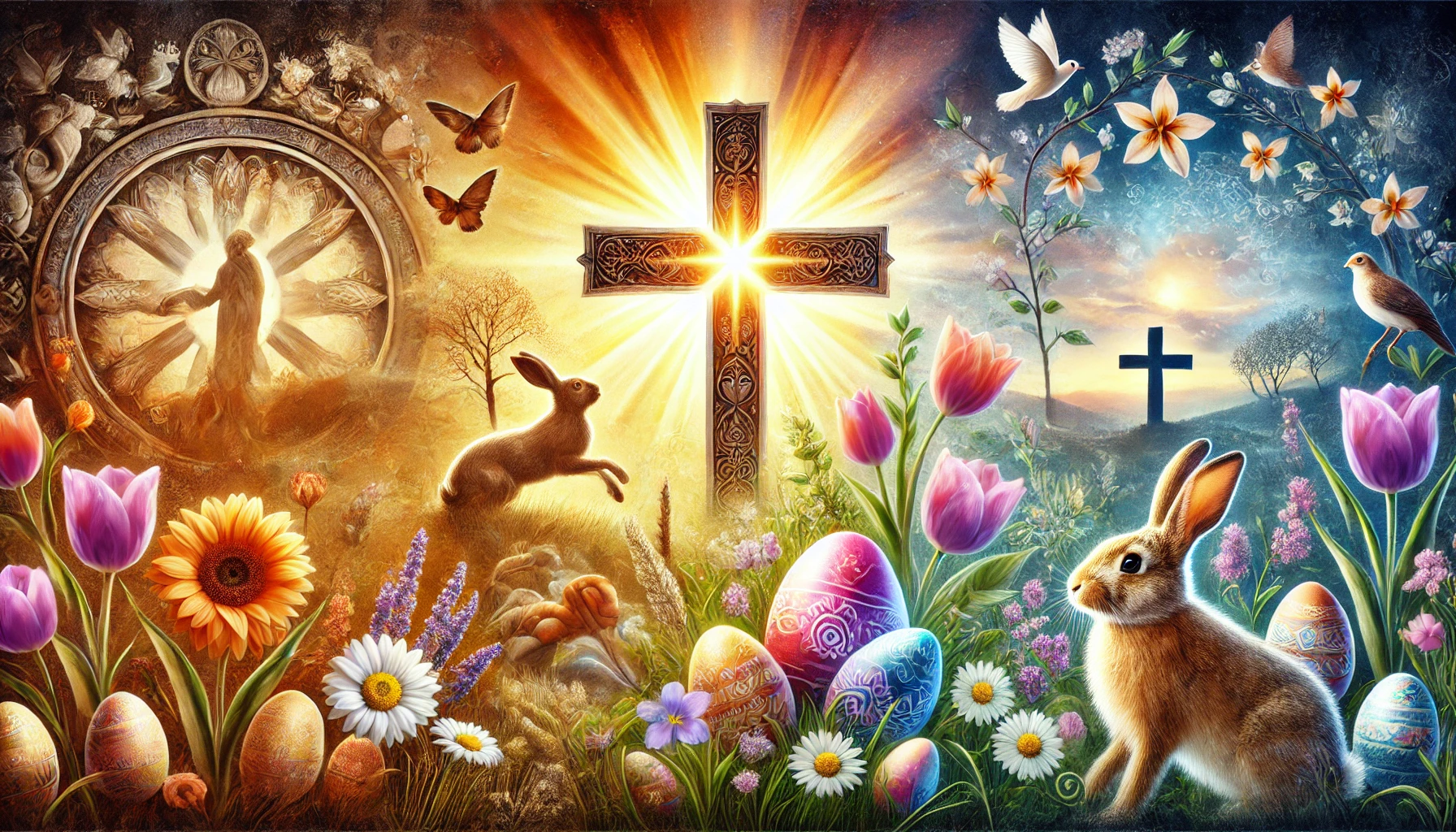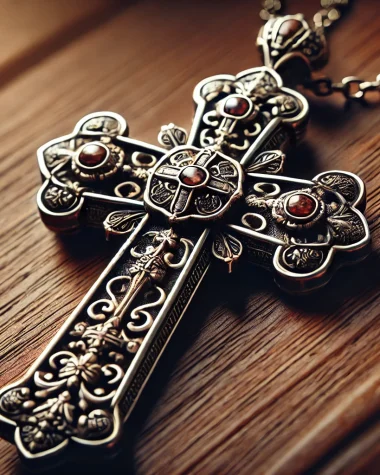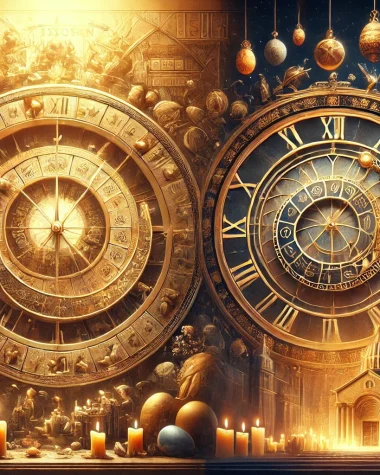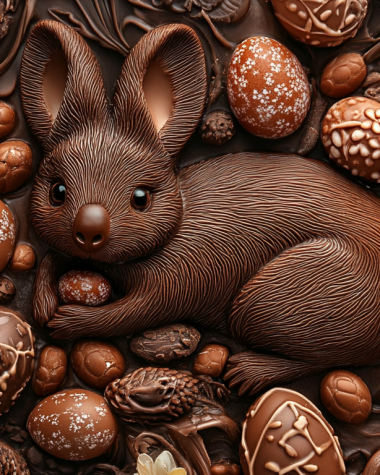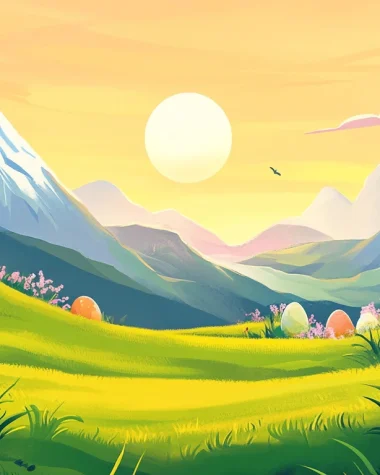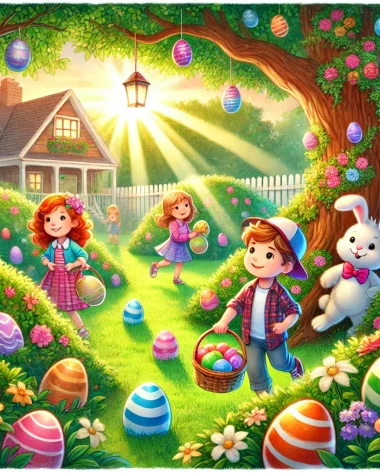Easter, one of the most significant celebrations in Christianity, commemorates the resurrection of Jesus Christ. Over centuries, its meaning, customs, and observances have been shaped by a fascinating blend of religious traditions, historical influences, and cultural adaptations. Today, Easter is celebrated with a diverse array of practices across the globe, reflecting both its sacred origins and the creative spirit of its adherents.
Table of Contents
Ancient Beginnings: Fertility and Renewal
Long before the rise of Christianity, many cultures marked the arrival of spring with festivals celebrating fertility, renewal, and the triumph of light over darkness. Among these was the worship of deities such as Eostre, the Anglo-Saxon goddess of spring and fertility, whose name is often linked to the term “Easter.” Her festival likely involved symbols of new life, such as eggs and hares, which have persisted in secular Easter traditions.
Similarly, ancient Near Eastern cultures celebrated the death and rebirth of gods like Tammuz and Adonis, whose stories echoed themes of renewal and life’s cyclical nature. These festivals provided a fertile cultural soil into which the early Christian observance of Easter would later be planted.
The Emergence of Christian Easter
For early Christians, the resurrection of Jesus Christ was the cornerstone of their faith. By the second century CE, communities began formalizing the annual commemoration of this event, calling it Pascha, derived from the Hebrew word “Pesach” or Passover. The timing of Easter, linked to the Jewish Passover, reflects its deep connection to the biblical narrative of liberation and salvation.
The Council of Nicaea in 325 CE played a pivotal role in standardizing the date of Easter. It was determined that Easter would be celebrated on the first Sunday after the first full moon following the vernal equinox, a formula designed to align with spring’s themes of renewal. This decision marked an effort to unify Christian observance, though differences in calendar systems – Julian and Gregorian – would later result in varying dates for Western and Orthodox Easter celebrations.
Medieval and Renaissance Transformations
As Christianity spread across Europe, Easter began to absorb local customs and traditions. In medieval England, for example, the Christian feast was enriched by earlier pagan symbols, such as the egg, representing new life, and the hare, a symbol of fertility. These elements were reinterpreted through a Christian lens, embodying themes of resurrection and divine creation.
During the Renaissance, Easter took on greater cultural and artistic significance. Elaborate church ceremonies were complemented by theatrical performances depicting the Passion of Christ. This period also saw the rise of traditional Easter foods, such as lamb, symbolizing Christ as the sacrificial Lamb of God, and sweet breads like Italian panettone or Russian kulich, which became central to Easter feasts.
Reformation and Secularization
The Protestant Reformation of the 16th century brought changes to Easter observances in many regions. Reformers like Martin Luther sought to simplify Christian worship, emphasizing the spiritual significance of Easter over its ceremonial aspects. As a result, some Protestant traditions minimized or abandoned practices like processions and elaborate liturgies, while retaining the central message of Christ’s resurrection.
The Age of Enlightenment further shaped Easter’s evolution, as secular ideas began to influence European society. In some areas, Easter’s religious meaning diminished, giving way to more secular customs. The Victorian era, for instance, popularized Easter cards and the exchange of chocolate eggs, traditions that remain popular today.
Easter in the Modern World
In the 20th and 21st centuries, Easter has continued to evolve, balancing its religious heritage with the demands of a global, multicultural society. For many Christians, the Lenten season leading up to Easter remains a time of fasting, reflection, and prayer. Holy Week – particularly Maundy Thursday, Good Friday, and Easter Sunday – is marked by solemn church services and joyous celebrations of the resurrection.
However, Easter has also become a widely celebrated secular holiday. The Easter Bunny, egg hunts, and candy-filled baskets are beloved by families and children around the world. These playful traditions, though less directly tied to the religious story, echo ancient themes of renewal and joy. Commercialization, too, has left its mark, with retailers promoting Easter-themed products ranging from pastel-colored decorations to seasonal treats.
Cultural Variations and Global Perspectives
Easter’s observance varies significantly across cultures. In Greece, Orthodox Christians celebrate with the Paschal Vigil, midnight fireworks, and a feast of lamb. In Poland, families participate in the blessing of Easter baskets, a custom called “Święconka.” In the Philippines, colorful processions known as “Salubong” dramatize the meeting of the risen Christ and his mother, Mary.
In contrast, some countries, particularly in Asia and the Middle East, may observe Easter more quietly, reflecting the minority status of Christian communities in these regions. Yet even here, the universal themes of hope, renewal, and joy resonate deeply.
Challenges and Opportunities
In an increasingly interconnected world, Easter faces both challenges and opportunities. Secularization has led to a decline in church attendance in many Western nations, prompting some to lament the loss of Easter’s spiritual essence. Yet, this has also created opportunities for dialogue and inclusivity, as people of various beliefs explore the universal values embodied in Easter traditions.
Furthermore, technology has transformed the way Easter is celebrated. Virtual services, online devotionals, and social media platforms allow communities to connect and share their faith across distances, particularly during times of crisis, such as the COVID-19 pandemic.
A Celebration of Hope and Renewal
Easter’s journey through history reflects the dynamic interplay between faith, culture, and human creativity. From its roots in ancient spring festivals to its role as the cornerstone of Christian belief, Easter has adapted to changing times while retaining its core message: the triumph of life over death, light over darkness, and hope over despair.
Whether observed in solemn liturgies, festive family gatherings, or simple acts of kindness, Easter remains a celebration of renewal and joy that continues to inspire millions around the world.
